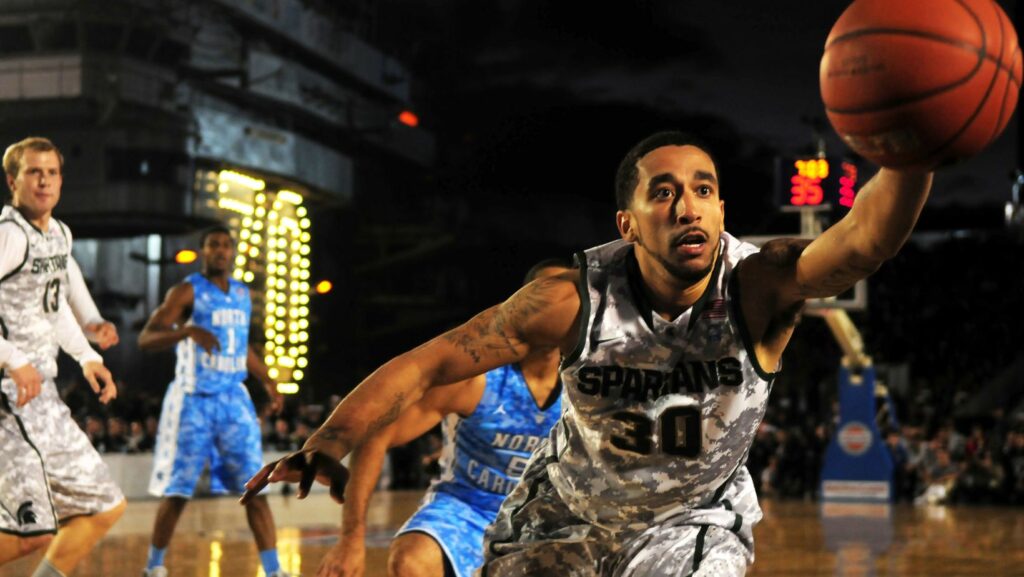Basketball Positions
- Understanding Roles: Familiarity with the five primary basketball positions—point guard, shooting guard, small forward, power forward, and center—is essential for both players and fans to appreciate the game’s dynamics.
- Position Responsibilities: Each position has unique responsibilities that impact offensive and defensive strategies, highlighting the importance of teamwork and cooperation among players.

- Skill Evolution: Basketball positions have evolved over time, with modern players often showcasing skills traditionally associated with multiple roles, enhancing versatility on the court.
- Playing Styles Impact: Traditional roles are increasingly blending due to the growing trend of positionless basketball, allowing players to adapt and contribute in various contexts during the game.
- Team Success Factor: Effective communication and collaboration among players in their designated roles significantly influence a team’s overall success during games.
Basketball is a dynamic sport that thrives on teamwork and strategy, and understanding the various positions on the court is essential for any player or fan. Each position comes with its own unique responsibilities and skills, shaping how the game unfolds. Whether it’s the agile point guard directing plays or the towering center dominating the paint, every role contributes to the team’s overall success.
As players develop their skills, knowing the nuances of each position can enhance their performance and elevate their game. This guide dives into the five primary basketball positions, offering insights into their specific functions and how they interact within the team structure. With this knowledge, players can better appreciate their roles and fans can gain a deeper understanding of the sport they love.
Overview Of Basketball Positions
Understanding basketball positions plays a crucial role in gameplay, influencing team dynamics and strategies. Each position carries unique responsibilities that enhance overall team performance.
Importance In Gameplay
Basketball positions dictate player roles and responsibilities, impacting offensive and defensive strategies. Point guards typically lead plays and direct teammates. Shooting guards excel in scoring, particularly from long-range shots. Small forwards combine agility with versatility, while power forwards and centers focus on rebounding and inside scoring. Effective communication and collaboration among players in their designated roles can significantly improve team success during games.
Historical Evolution
Basketball positions originated in the early 20th century, evolving as the game progressed. Initially, teams utilized simple formations with vague roles. By the 1950s, distinct positions emerged, each characterized by specific skills and duties. The introduction of the shot clock in 1954 further defined roles, with guards emphasizing speed and shooting. Over the years, positions have continued to evolve, blending skill sets. Modern players often crossover into multiple roles, enhancing versatility and adaptability on the court.
The Five Main Basketball Positions
Basketball teams comprise five primary positions, each playing a vital role in both offensive and defensive strategies. Understanding these positions helps players excel in their specific roles and enhances fan appreciation of the game.
Point Guard
Point guards serve as the team’s leader on the court. They manage the play’s tempo and facilitate ball movement. Skills such as passing accuracy and court vision are essential for making quick decisions. Often the shortest player, the point guard sets up offensive plays, ensuring smooth cooperation among teammates.
Shooting Guard
Shooting guards primarily focus on scoring. Exceptional shooting ability, particularly from beyond the arc, and strong perimeter defense characterize this position. Players excel in driving to the basket and making quick, decisive shots. This role often requires athleticism and agility, as shooting guards create their own scoring opportunities.
Small Forward
Small forwards blend skill sets from both guards and forwards, offering versatility on the court. They contribute to scoring, rebounding, and defense. Players in this position exhibit agility, allowing them to navigate both inside and outside the paint effectively. Small forwards often guard opposing players, adapting to various offensive strategies.
Power Forward
Power forwards play a crucial role near the basket, focusing on rebounding and scoring in the post. Their physicality and ability to finish around the rim distinguish them. This position often involves setting screens and creating space for teammates. Power forwards also contribute to defensive plays, protecting the paint and challenging shots.
Center
Centers occupy the key area near the basket and excel in rebounding and shot-blocking. Often the tallest player, they play a significant role in scoring from close range. Strong positioning and effective footwork are crucial skills for centers. They anchor the team’s defense and provide a dominant presence in the paint.
Roles And Responsibilities Of Each Position
Each basketball position plays a vital role in both offensive and defensive strategies. Understanding these roles enhances team coordination and effectiveness.
Offense Strategies
- Point Guard: Initiates plays and directs offensive strategies. It requires exceptional ball-handling skills and court vision to create scoring opportunities. Point guards often facilitate passes, driving plays to ensure optimal scoring chances.
- Shooting Guard: Focuses on perimeter shooting and scoring efficiency. They exploit defensive mismatches through their agility and shooting range, frequently taking advantage of open looks created by the team’s movement.
- Small Forward: Provides scoring and versatility. They adapt to various offensive roles, from driving to the basket to shooting from long range. Their flexibility allows them to adjust strategy based on matchups and game situations.
- Power Forward: Combines strength with scoring capability. They score close to the basket while also stretching defenses with mid-range shots. Their primary responsibility includes setting screens to free up teammates for scoring opportunities.
- Center: Operates in the paint, offering scoring through post-up plays. Centers utilize size to dominate rebounds and initiate plays under the basket. Their role in offensive strategies often includes setting picks to open driving lanes for guards.
- Point Guard: Leads the defense by pressuring the opposing ball handler. They must anticipate plays and disrupt offensive flow, often initiating fast breaks through steals.
- Shooting Guard: Acts as a perimeter defender, focusing on contesting shots and denying ball movement. Their agility allows them to guard multiple positions effectively.
- Small Forward: Provides versatile defense, capable of guarding both wings and excellent in help defense. Small forwards anticipate plays and rotate effectively to support teammates.
- Power Forward: Combines strength and agility to defend against larger opponents in the post. They also switch onto more agile players when necessary, ensuring fluid defensive communication.
- Center: Dominates defensive rebounding and shot-blocking. Centers secure the paint area and protect against inside scoring. Their presence often acts as a deterrent for opposing players attempting drives to the basket.
Impact Of Playing Styles On Positions
Playing styles significantly influence basketball positions, shaping how teams strategize and execute plays. The evolution of these styles affects both traditional roles and the emergence of positionless basketball.
Traditional Vs. Modern Roles
Traditional roles emphasize specific skill sets tied to each position, with clear distinctions between guards, forwards, and centers. Point guards orchestrate plays, shooting guards score, small forwards balance scoring and defense, power forwards dominate the post, and centers protect the basket. Modern roles have seen these distinctions blur due to the increased emphasis on versatility and adaptability. Players now often embody traits from multiple positions. For example, many power forwards now exhibit shooting range similar to shooting guards, expanding offensive strategies and spacing on the court.
Positionless Basketball
 Positionless basketball represents a strategic shift towards flexibility, where players assume responsibilities across various roles. This style prioritizes skill set over traditional positional constraints, allowing for dynamic matchups and faster-paced gameplay. Teams employing a positionless approach benefit from enhanced ball movement and spacing, with players capable of shooting, dribbling, and defending in multiple ways. Notably, this strategy facilitates the inclusion of hybrid players—those who blend attributes of guards and forwards—transforming how teams build lineups and approach both offense and defense. Coaches increasingly design plays that leverage these versatile players, emphasizing teamwork and communication to maintain effectiveness on the court.
Positionless basketball represents a strategic shift towards flexibility, where players assume responsibilities across various roles. This style prioritizes skill set over traditional positional constraints, allowing for dynamic matchups and faster-paced gameplay. Teams employing a positionless approach benefit from enhanced ball movement and spacing, with players capable of shooting, dribbling, and defending in multiple ways. Notably, this strategy facilitates the inclusion of hybrid players—those who blend attributes of guards and forwards—transforming how teams build lineups and approach both offense and defense. Coaches increasingly design plays that leverage these versatile players, emphasizing teamwork and communication to maintain effectiveness on the court.
Captivating Sport for Everyone
Understanding basketball positions is essential for both players and fans. Each role contributes uniquely to a team’s overall strategy and success. Players can enhance their performance by mastering their specific responsibilities while appreciating the intricacies of the game.
The evolution of basketball positions reflects a shift towards versatility and adaptability. Modern players often blend roles, allowing for dynamic gameplay and innovative strategies. Coaches now prioritize teamwork and communication, recognizing that effective collaboration among players in their designated positions can lead to greater achievements on the court. This ongoing transformation keeps the game exciting and ever-evolving, ensuring basketball remains a captivating sport for everyone involved.

